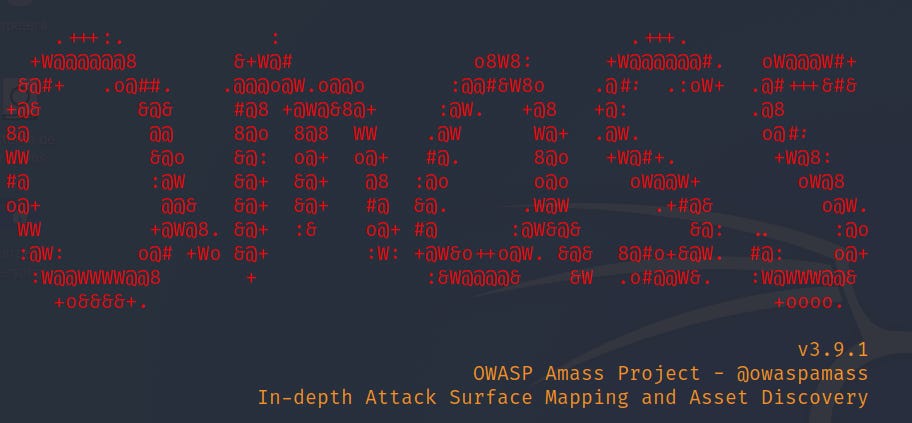Guide to Using Amass for Subdomain Enumeration and Network Mapping
1. Install Amass:
- Download Amass: Download the latest release of Amass from the official GitHub repository.
- Compile or Install: Depending on your operating system, you may need to compile Amass from source or install it using a package manager.
2. Prepare Target Domain:
- Identify Target Domain: Determine the domain for which you want to perform subdomain enumeration and network mapping.
3. Run Amass:
- Basic Subdomain Enumeration:
amass enum -d example.comReplace example.com with the target domain.
- Advanced Options:
-v: Verbose output.-passive: Perform passive subdomain enumeration using DNS resolution.-active: Perform active subdomain enumeration using DNS brute-forcing and other techniques.-o: Specify output format (e.g., CSV, JSON).-src: Specify data source (e.g., DNSDB, VirusTotal, Sonar).
4. Analyze Results:
- Review Output: Open the output file generated by Amass to review the discovered subdomains and associated information.
- Interpret Results: Analyze the discovered subdomains to identify potential attack surface and areas for further investigation.
Tips and Considerations:
- Passive vs. Active Enumeration: Choose between passive and active enumeration modes based on your objectives and risk tolerance. Passive enumeration is less intrusive but may provide fewer results, while active enumeration may trigger security alerts or IP bans.
- Data Sources: Configure Amass to utilize various data sources such as DNSDB, VirusTotal, and Sonar to maximize coverage and accuracy in subdomain enumeration.
- Custom Configurations: Customize Amass’s configuration settings, including wordlists, DNS resolvers, and rate limits, to optimize performance and avoid detection.
- Integration with Other Tools: Integrate Amass with other reconnaissance tools such as Nmap, Masscan, and Burp Suite for comprehensive network mapping and vulnerability assessment.
- Continuous Monitoring: Schedule regular subdomain enumeration scans with Amass and monitor changes in the target domain’s attack surface over time.
By following this guide, you can effectively use Amass for subdomain enumeration and network mapping to identify potential attack surface and discover hidden assets associated with a target domain. Always use such tools responsibly and ethically, and ensure compliance with applicable laws and regulations.

